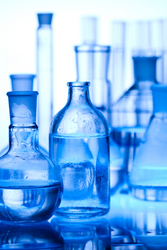Glass vs. Plastic Beakers: Navigating the Laboratory Choices
29th Nov 2023
For decades, the quintessential image of a scientist has involved them working with bubbling concoctions in glass beakers. However, with the rise of new materials, plastic beakers have gained significant ground in laboratories. While both options serve their purpose, choosing between glass and plastic involves a nuanced decision, considering different factors like chemical compatibility, heat resistance, safety, cost, and environmental impact.
The Enduring Legacy of Glass Beakers:
1. Inert and Chemical Resistant: Glass, primarily composed of silicon dioxide, is incredibly chemically inert. This means it doesn't leach chemicals into the solution it holds, making it ideal for reactions involving sensitive or reactive substances.
2. High Heat Tolerance: Glass showcases exceptional heat resistance, allowing it to be used with Bunsen burners, hot plates, and even ovens – crucial for many laboratory procedures.
3. Clarity and Visibility: The transparency of glass provides an unobstructed view of the contents inside the beaker, facilitating observation and color changes during experiments. This clarity is especially important when monitoring reactions or measuring precise volumes.
4. Reusable and Sustainable: Glass beakers are reusable with proper care and cleaning, making them a sustainable choice. They can be sterilized through autoclaving, a process that eliminates microorganisms, ensuring continued safe use for countless experiments.
However, glass also comes with limitations:
1. Fragility: Glass is undeniably fragile and can shatter easily if dropped or mishandled. This poses a safety hazard not only from potential cuts but also potential exposure to hazardous chemicals in the broken container.
2. Weight: Compared to plastic, glass is heavier, making it less convenient for prolonged use or situations requiring frequent handling.
3. Cost: Generally, glass beakers are more expensive than their plastic counterparts, especially larger sizes necessary for specific experiments.
The Rise of Plastic Beakers:
1. Unbreakable Safety: The unbreakable nature of plastic beakers eliminates the risk of shattering and potential injuries associated with glass breakage. This makes them particularly suitable for student laboratories or when working with hazardous chemicals.
2. Lighter Weight: Plastic's lightweight construction makes them easier to handle for extended periods, reducing fatigue and potential accidents. This lightweight property also makes them ideal for shipping or transporting laboratory materials.
3. Cost-Effective: Plastic beakers are generally more affordable than glass, making them a budget-friendly option for laboratories with limited resources or high volume usage.
However, plastic also has some drawbacks:
1. Limited Chemical Resistance: Certain plastic materials can be susceptible to degradation by specific chemicals. This necessitates careful selection based on the intended use and compatibility with the chemicals involved.
2. Lower Heat Tolerance: While some high-quality plastics can withstand moderate heat, they generally have a lower heat resistance compared to glass. This limits their use in high-temperature applications.
3. Potential for Leaching: Some plastic types, particularly lower-quality ones, can potentially leach chemicals into the solution, affecting the purity of the experiment and potentially impacting results.
4. Less Sustainable: Disposable plastic beakers contribute to plastic waste, raising environmental concerns. While some can be recycled, the process may be complex or unavailable depending on the location.
Choosing the Right Beaker:
Ultimately, the ideal beaker choice depends on the specific needs of the experiment and the laboratory environment. Here are some key factors to consider:
- Chemical compatibility: Ensure the chosen material is resistant to the chemicals involved in the experiment.
- Temperature requirements: Select a beaker that can withstand the necessary temperature range for the experiment.
- Safety considerations: Prioritize unbreakable options when working with hazardous materials.
- Budget: Consider the cost-effectiveness of reusable glass versus disposable plastic.
- Environmental impact: Opt for reusable glass or choose recyclable plastic options whenever possible.
By carefully evaluating these factors, scientists can make informed decisions about which type of beaker – glass or plastic – will best serve their specific laboratory needs while ensuring safety, accuracy, and environmental responsibility.
Contact us today to learn more about how we can help you achieve your healthcare supply chain goals.
(732) 447-1100 // info@cenmed.com

